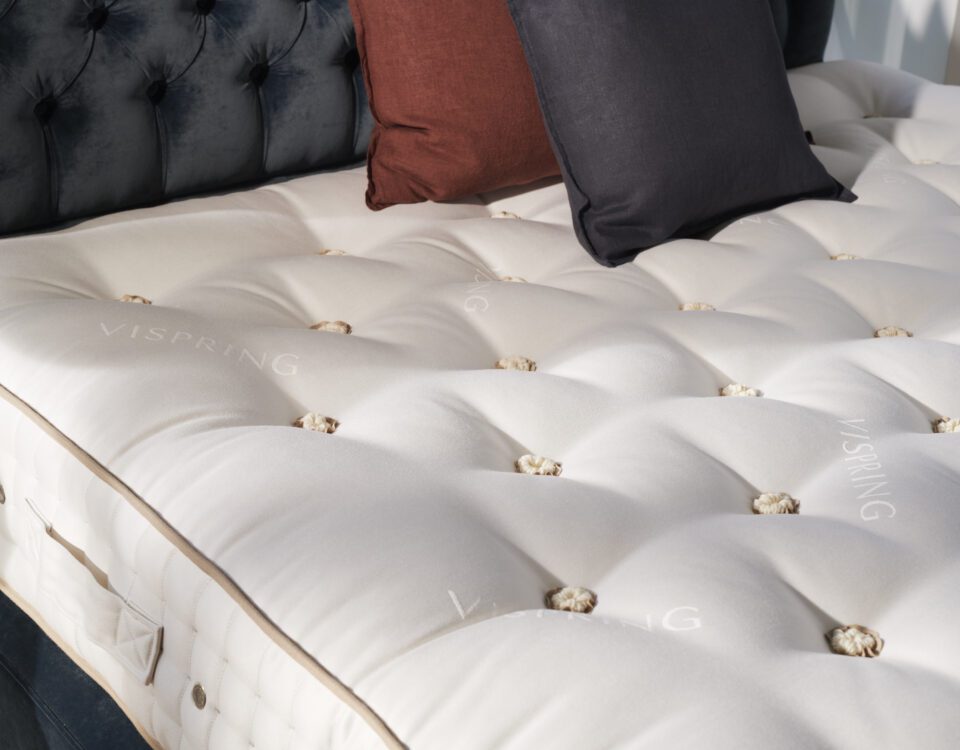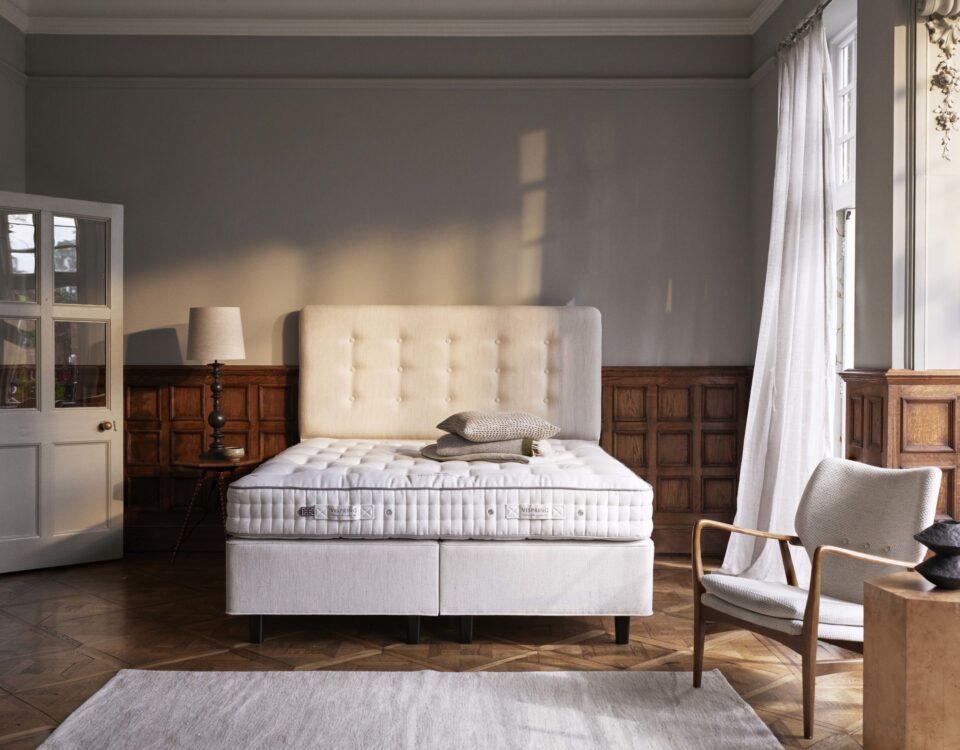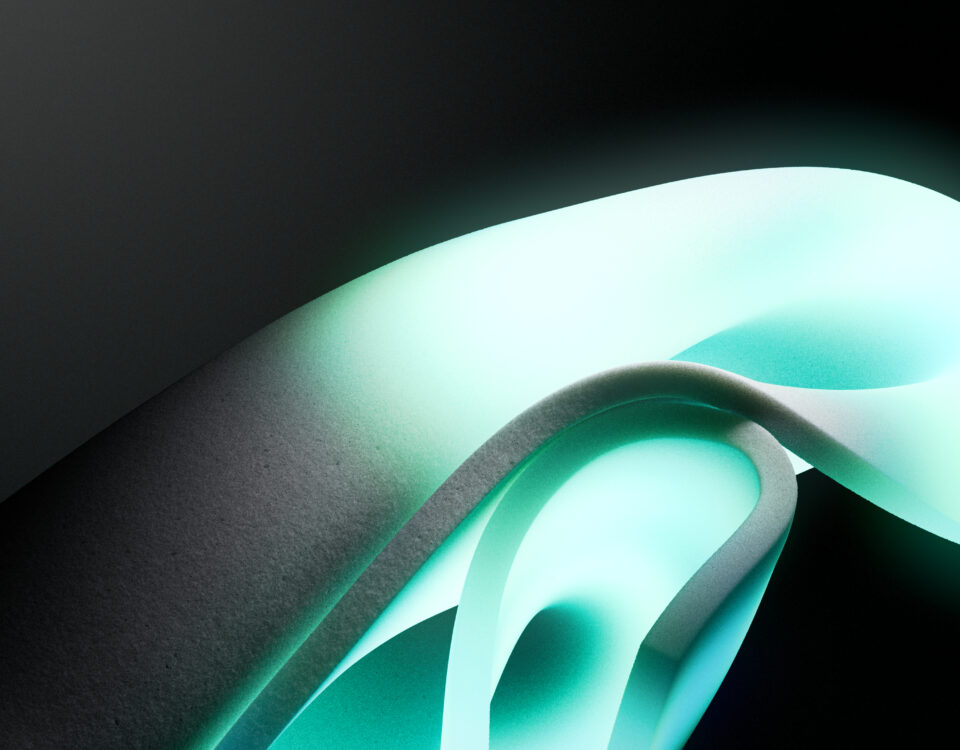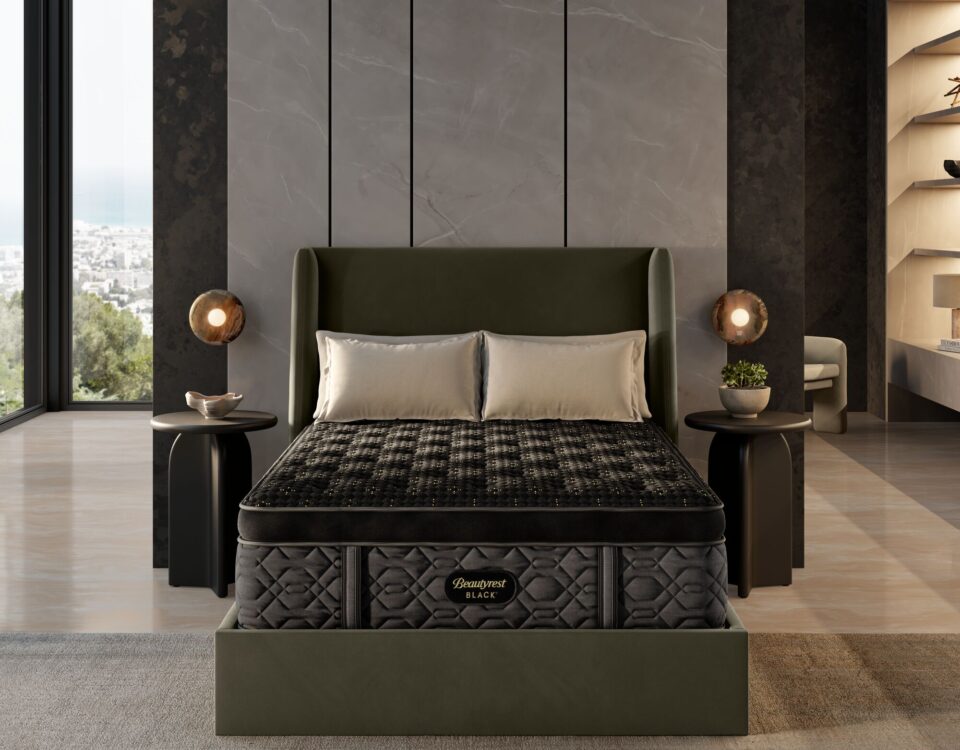Bed Basics: Compare mattress upholstery (part 2 of 2)
Still shopping for a new bed? Learning how to compare mattress to mattress? Now that you’ve gotten the tutorial on how to compare innersprings and the foam layers that are considered upholstery in a mattress, you can think about the final outer layer of quilting before you make that big decision.
Ticking, and how it’s attached, can make or break comfort
When you’re on the hunt for the most comfortable bed possible (did someone say Black mattress? hint hint), you probably think about the mattress or the bedding, but did you know that the fabric encasing your mattress can have just as big of an effect on your comfort? The same goes for how it’s attached, too.
Yes, you are covering your mattress with a set of sheets and likely a mattress protector, but think about the way the mattress will interact with the layers on top. Will something too tightly woven keep you overly warm at night? Will something slick make you feel like you’re falling out of bed? Will something too tight take away from that plush feel?
Whether you’re interested in traditional mattress fabrics, such as cotton and polyester, high-end mattress fabrics or even some of the new environmentally-friendly fabrics, here’s a look at the pros and cons at the standard mattress fabric types.
Cotton and wool:
Pros: Two of the first fabrics to be used for mattress ticking, cotton and wool, both natural fabrics, remain just as popular today because of how comfortable they can make a mattress. Also, cotton and wool are highly absorbent with natural moisture-wicking attributes. Cotton and wool are also naturally fire resistance, which cannot be said for several other mattress fabric types.
Cons: Since these are natural fabrics, they will break down faster and need to be replaced sooner than a synthetic fabric. Also, neither of these fabrics are known to feel particularly luxurious against the skin.
Polyester:
Pros: For many people when they compare mattresses, the most important thing they’re looking for is a mattress that will last as long as possible. For these people, a synthetic mattress fabric, like polyester, is a great option. Polyester, since it is petroleum-based, is guaranteed to last the longest out of any other mattress fabric type. And polyester is easy to wash.
Cons: Unfortunately, polyester fabric is less comfortable than other materials. And if you have any skin issues or chemical sensitivity issues, a polyester mattress covering also might not be the best option.
Silk:
Pros: One of the greatest things about silk covered mattresses is that the fabric is nearly always comfortable and luxurious, whether the silk is manmade or derived naturally. The process to create silk has been refined and produces such a high-quality silk that you would never know otherwise.
Cons: Silk can be too slippery for some sleepers. Instead, look for a silk blend in a mattress fabric, which is becoming more and more popular.
As a side note, most other luxury fabrics and blends, like cashmere, are designed to be softer to the touch with a little more give, and you’ll typically see that reflected in the price tag.
Bamboo
Pros: Bamboo is actually one of the most commonly mixed fabrics with silk mattress covers. Bamboo, which is naturally derived from the environment, grows fast and can be renewed often. It’s also highly comfortable, and its texture is a lot like silk, but a bit more robust. Bamboo fabric is naturally antibacterial, can be cleaned easily, and is inexpensive.
Cons: The lifespan of bamboo ticking isn’t as long as that of polyester, cotton, or wool.
Quilting
Don’t just look at the fabric on top of the mattress. Consider how tightly it’s attached as well as the mattress’ firmness. A very plush top layer does better with a fabric that has plenty of give. A firmer mattress doesn’t require as much stretch in the ticking.
You will most commonly see the outer fabric quilted on, with rows of stitches or buttons connecting the fabric to the layer below. Look closely at the quality of stitching on the mattress quilting. Make sure they’re consistent and unbroken, which can be a problem with some lower quality ticking procedures.
Whether you’re interested in comfort or durability, remember, compare mattress fabrics in addition to the spring construction and the comfort and support layers. Look at the whole bed before you buy, and make sure you’re getting one that meets all your needs.




